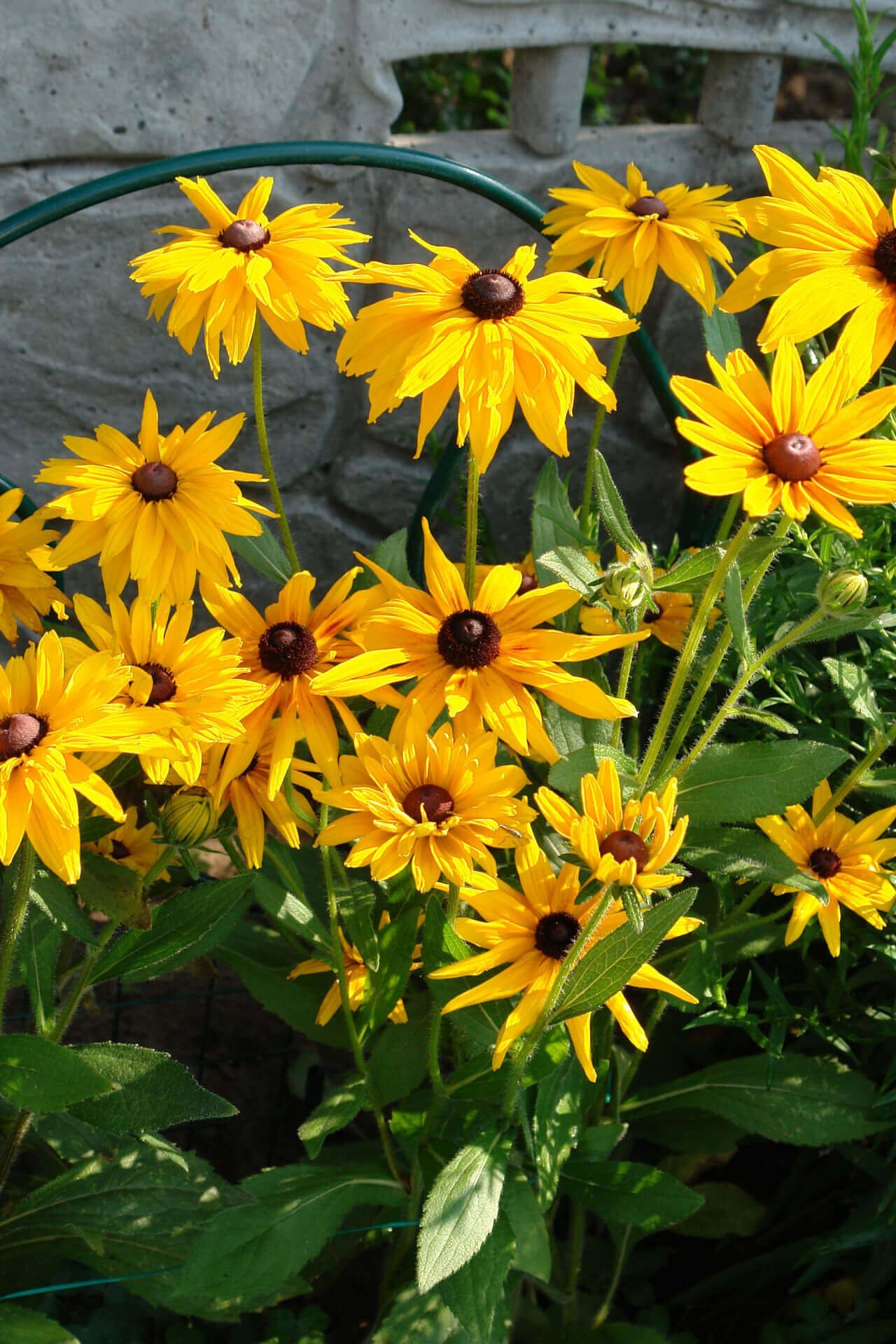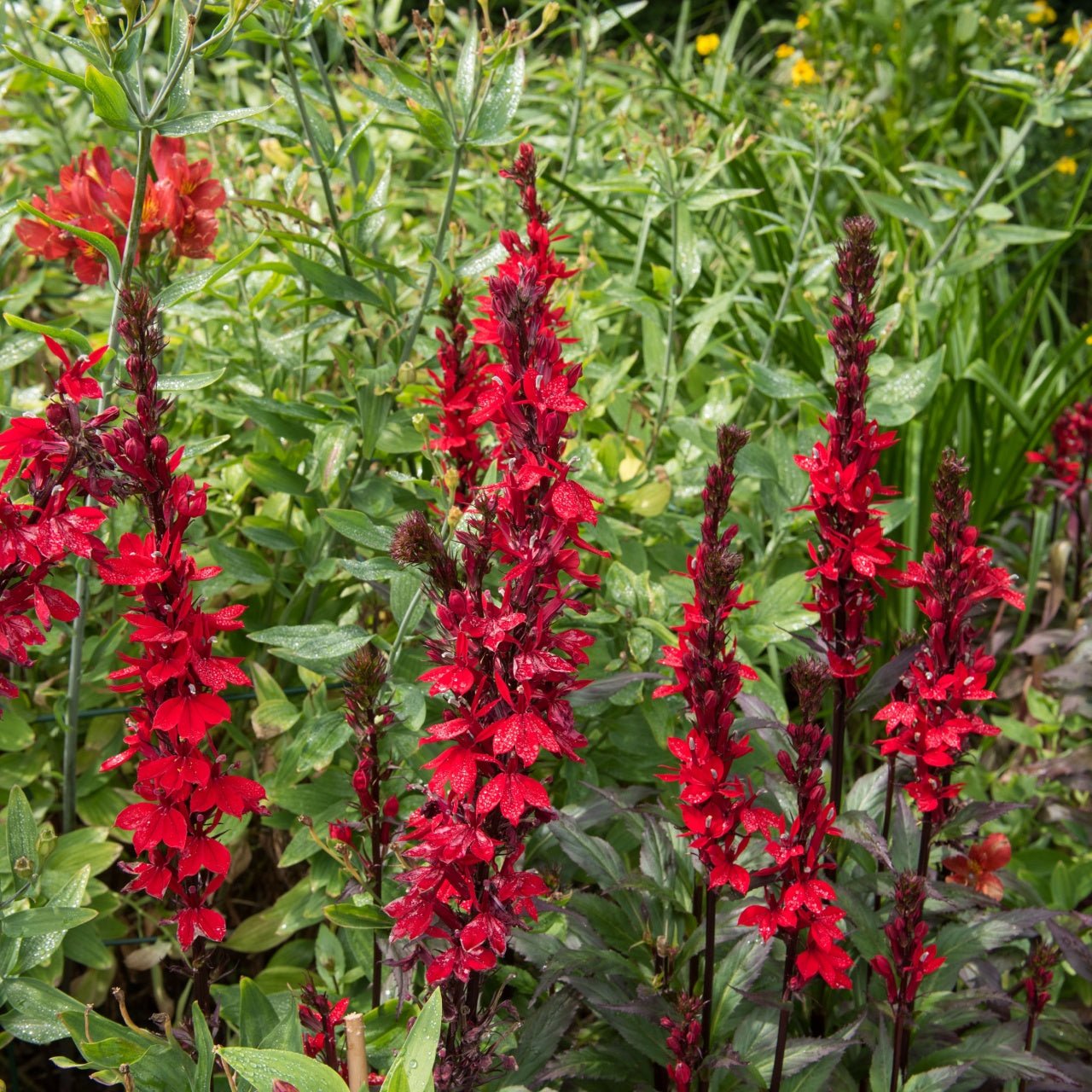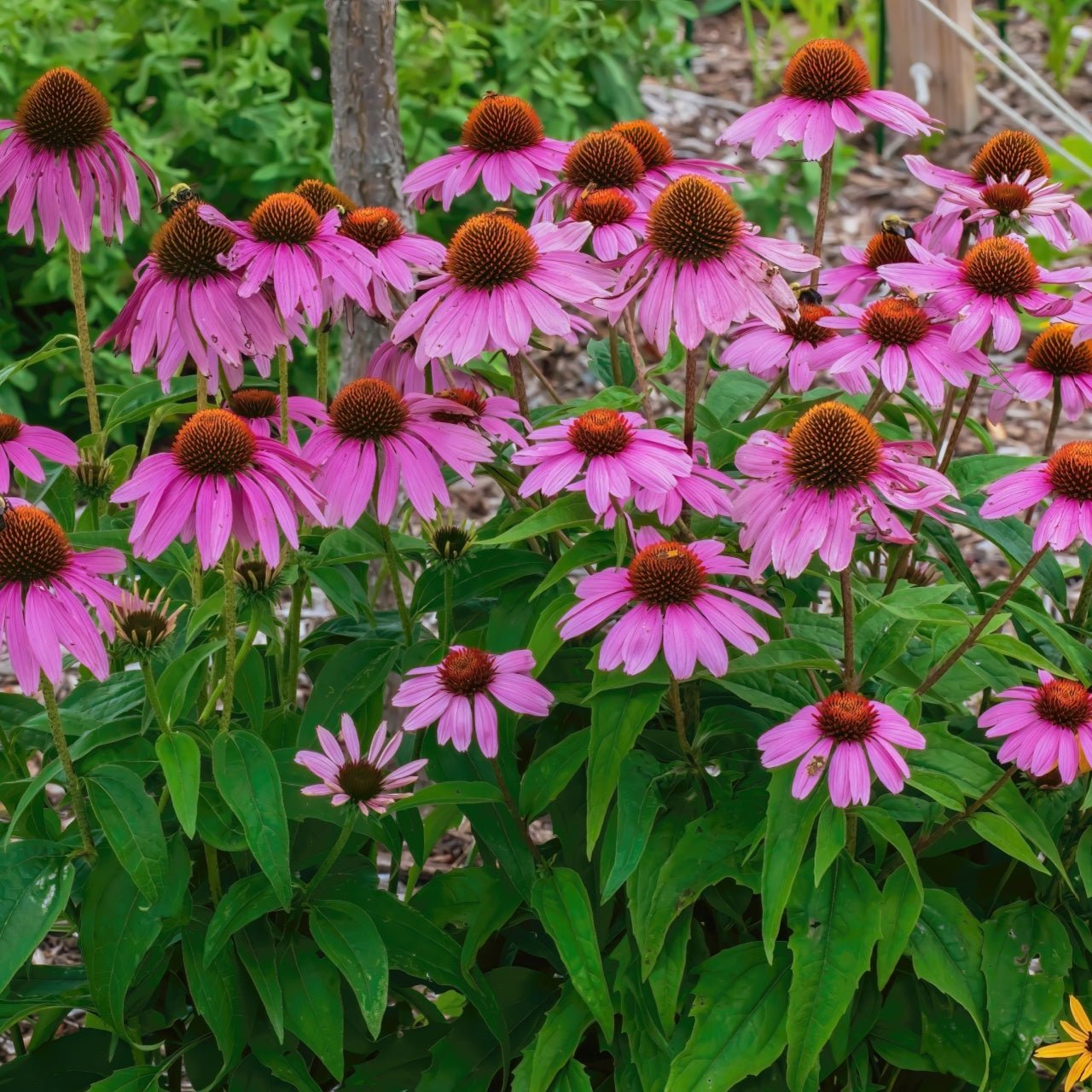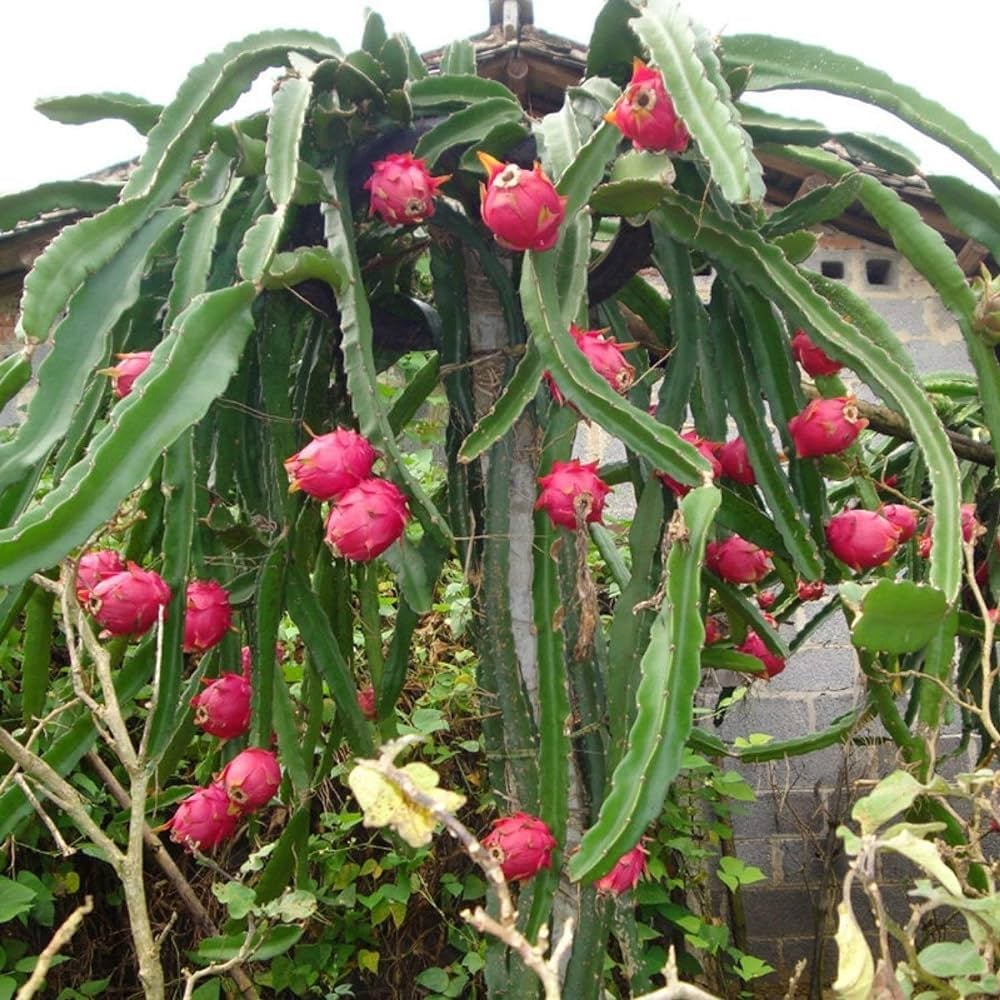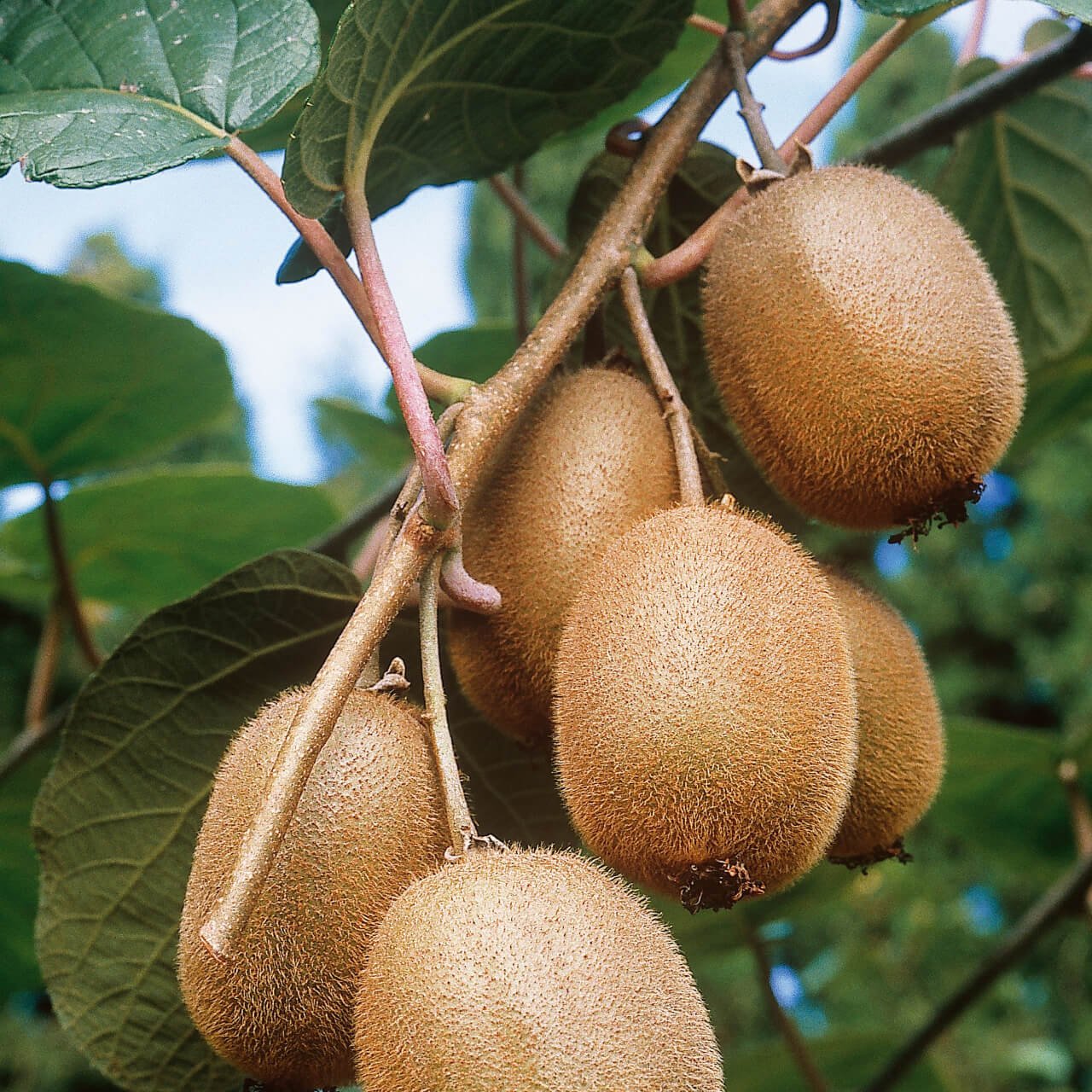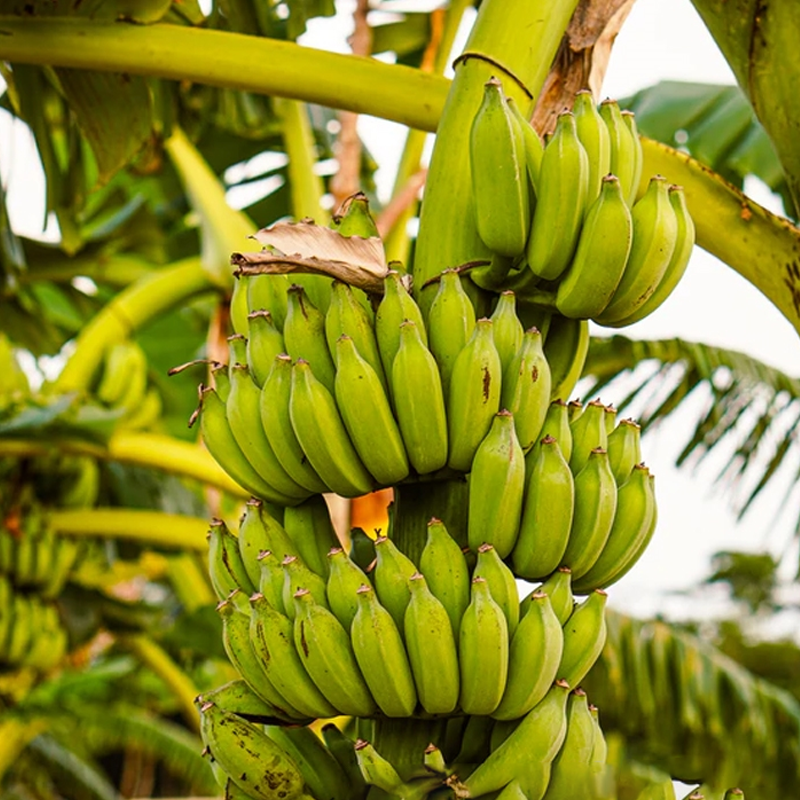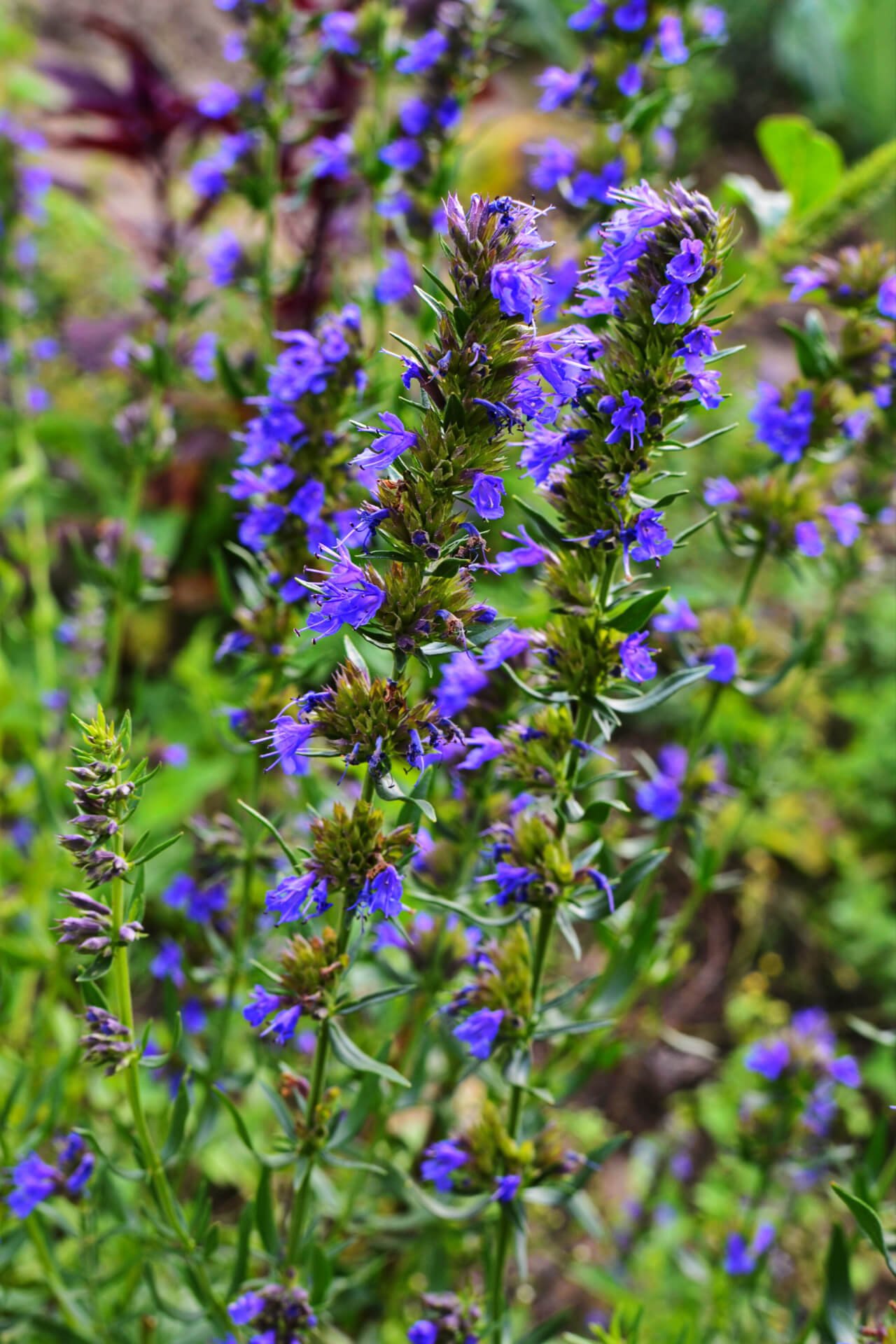

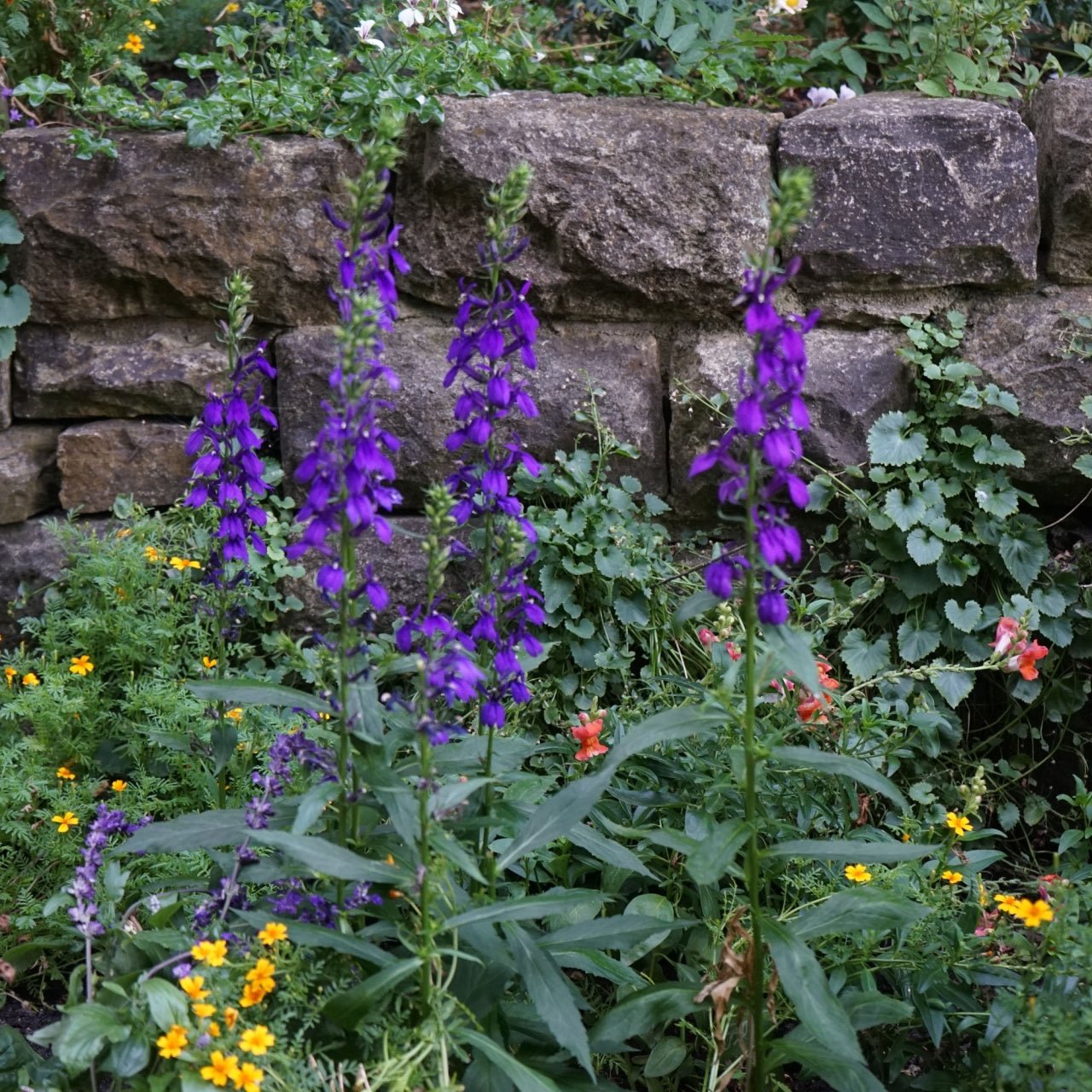
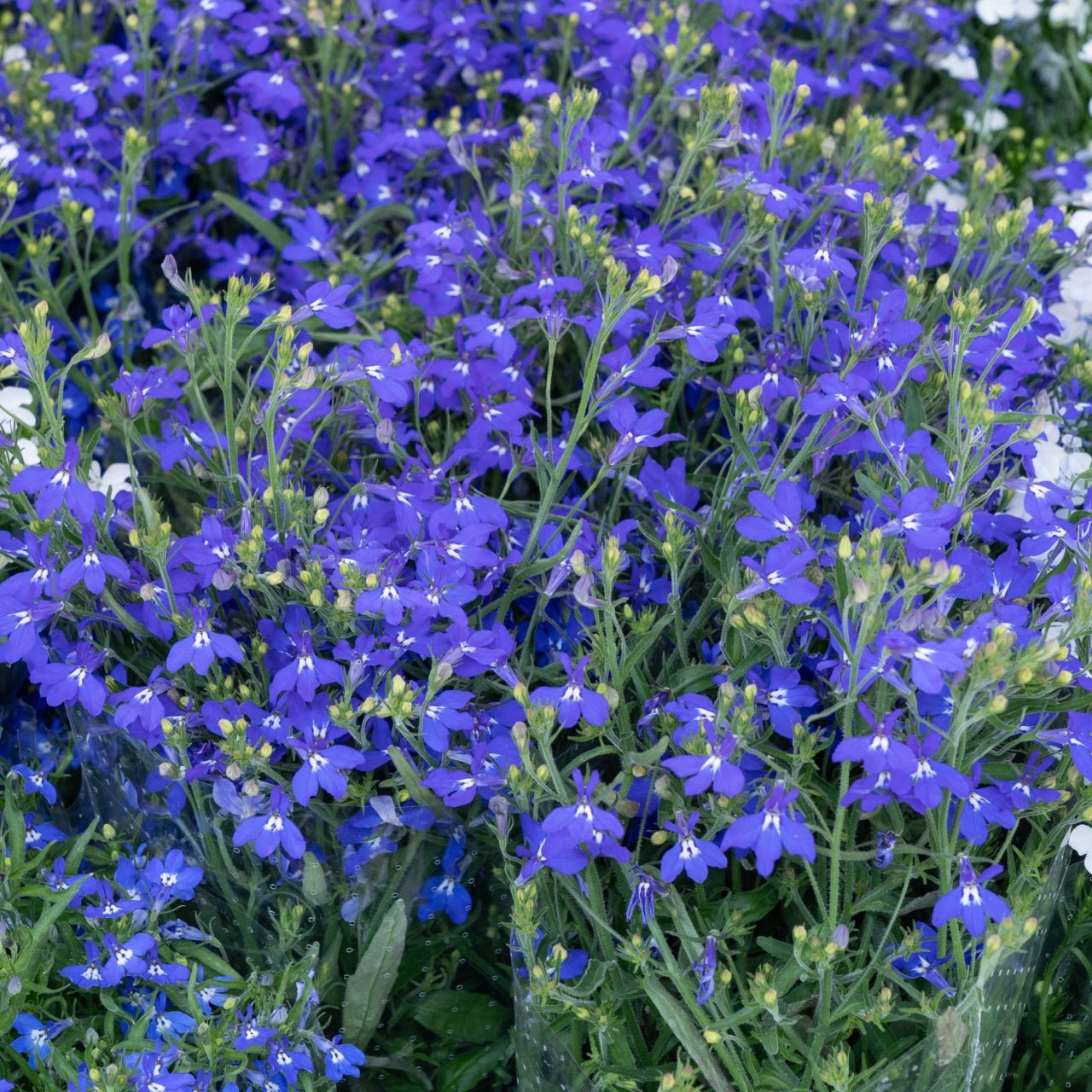
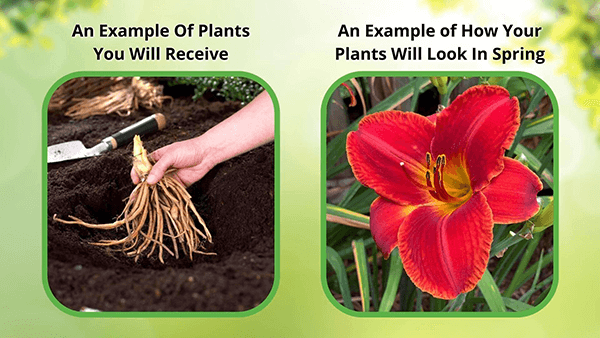
Blue Lobelia
Long-lasting blooms throughout the season
Low maintenance and hardy plant
Stunning, vibrant blue flowers
Thrives in
ZONE 2ZONE 3ZONE 4ZONE 5ZONE 6ZONE 7ZONE 8ZONE 9ZONE 10ZONE 11This plant ships:
Ships Week of May 12th1 Year Guarantee on all plants
Blue Lobelia: Lobelia Siphilitica
Blue Lobelia has striking blue hues and an attractive shape; this perennial plant can elevate the aesthetics of any garden or outdoor space. It is an excellent addition to any landscape design, from attracting pollinators to providing visual appeal.
It is a fantastic choice when you crave flowers that swirl together showy blue blossoms with vibrant greenery in bright spikes. It's a striking, solidly built plant that delights people and pollinators.
The Aesthetics of The Blue Lobelia
Several large flowers spiral around the stout central stem in an extended cluster. They are positioned most heavily along the upper portion of the stem. The tubular flowers have five petals with edges that curl attractively. Two petals form an upper lip—three fuse together to create a lower lip that is more prominent. Blooms are typically about an inch long and may appear solid or striped.
While the bold flowers are the show's stars, the vibrant green foliage shines in its supporting role. The thick, unbranching stem stands firm and tall, allowing the plant to quickly reach two to three feet. Plants reaching four feet in height are not uncommon. The stems are wrapped in alternating leaves with no stalks in varying shapes. Some are shaped like a lance and finely toothed. These can measure up to five inches in length. Others are elliptical and can be between two and six inches long.
They are primarily found in shades of blue or purple. However, plants with white flowers are also available. In addition, crosses with cardinal flowers may result in plants that produce pink blooms.
Blue Lobelias Blooming Season
This wildflower generally unfurls its blooms in midsummer or later and continues the show until fall. In many regions, you can enjoy the flowers from July through October.
Exotic Flowers
They are unique flowers that put on a fantastic show, so they're an excellent choice when you want something big, bold, and beautiful. They attract hummingbirds, butterflies, and pollinators. They flourish along ponds and water features, are favorites in borders, thrive in rain gardens, and delight when paired with plants like ferns, heuchera, or cardinal flowers.
It prefers a balanced fertilizer, a 10-10-10 mix that should be applied monthly during the growing season. Organic compost also improves the soil and promotes healthy flowers.
It can be grown in moist, well-drained soil in partial to full sun. It is suitable for borders, rain gardens, or near streams.
They require consistent watering as they thrive in moist soil. Remove withered flowers to encourage consistent blooms. Trimming back the stems after the flowering period helps to increase growth.
Can I grow It in containers?
It can be grown in containers with excellent drainage and fertile soil. Potted plants need watering more often than those growing directly in the soil since they dry out much faster.
Blue Lobelia is a short-lived perennial that lasts only 2 to 3 years. However, it readily self-seeds, so new plants will sprout season after season.
This Is How Your Plants Will Look upon Delivery
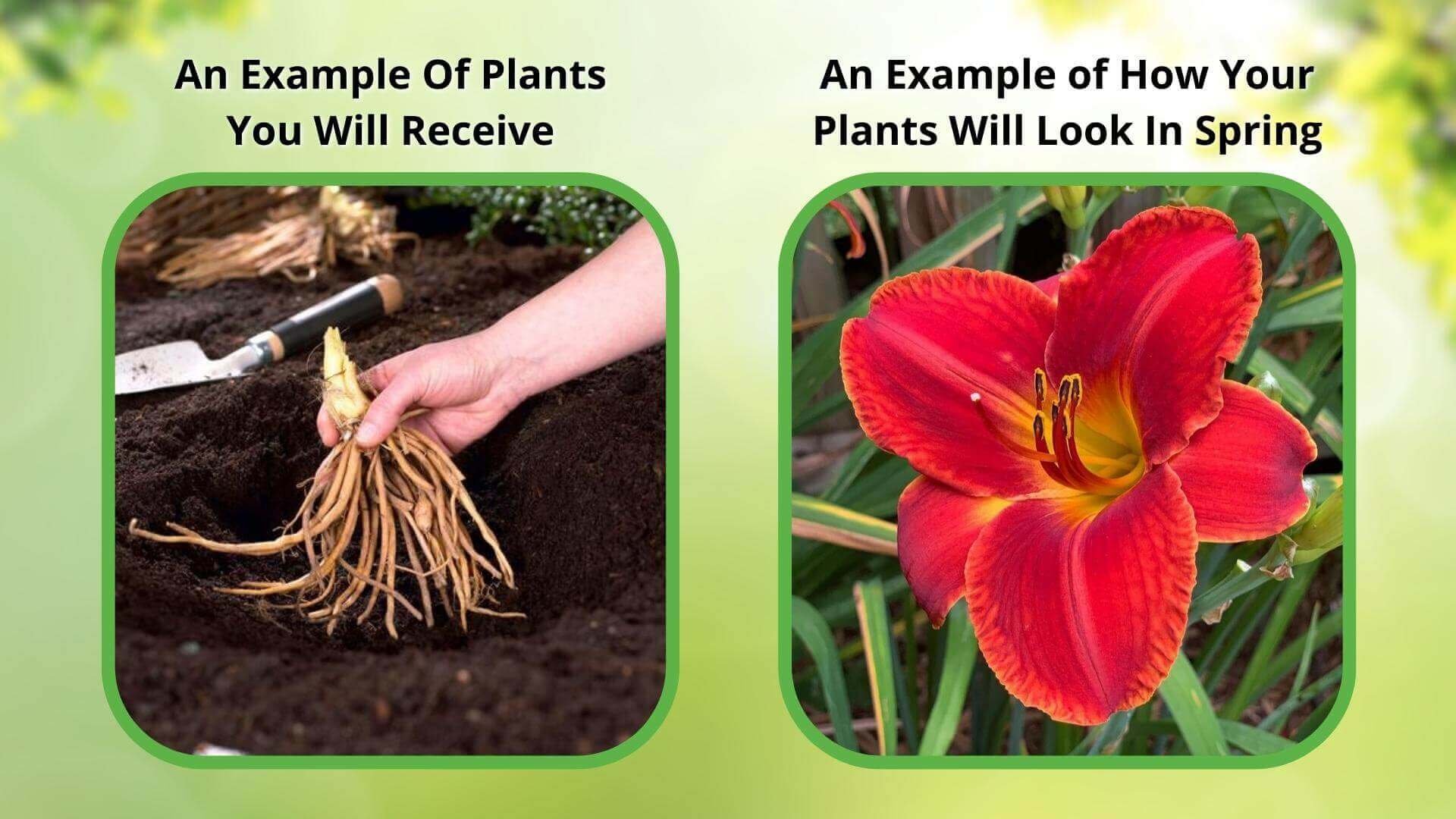
Bloom Season
Summer
Bloom/Foliage Color
Blue
Height at Maturity
Over 12"
Care
Blue Lobelia thrives in well-drained, consistently moist soil. Regularly water to moisten the soil, especially during hot, dry periods. Fertilize lightly in early spring, and remove spent flowers to encourage continuous blooming—mulch to retain moisture and suppress weeds.
Plant Reproduction
Blue Lobelia spreads by reseeding, dividing clumps, or taking cuttings.
Shipping date depends on the date displayed and chosen when you order from the product's page.
We only accept returns on plants verified dead. If you think your plants have died, we offer a 1 year warranty, please use this File a Claim Link to verify dead plants and start with return warranty process.






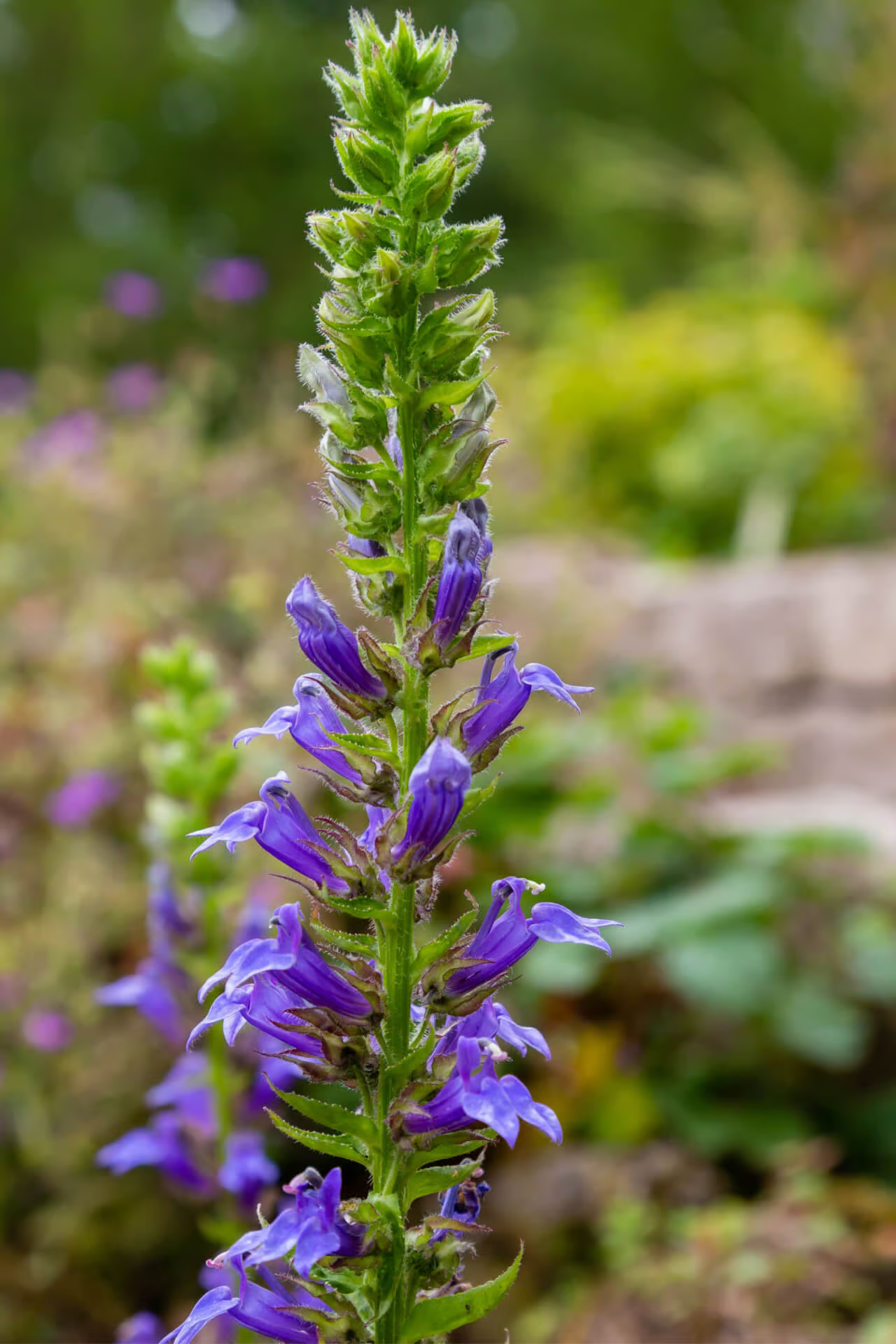
Showy Blossoms and Vibrant Greenery:
Its tubular flowers, with their unique petal arrangement, add a bold touch to your garden. The blooms, often solid or striped, are complemented by lush green foliage and a sturdy stem that can reach up to four feet in height.
Perfect for Containers:
Ideal for hanging baskets and patio pots, Blue Lobelia’s trailing habit makes it an excellent choice for adding color to containers and vertical spaces.
Attracts Pollinators:
The vibrant blue flowers attract bees, hummingbirds, butterflies, and other beneficial insects. By planting Blue Lobelia, you support local pollinators and enhance garden biodiversity.
Seasonal Beauty:
Blue Lobelia typically begins blooming in midsummer and continues to dazzle until fall, from July through October in many regions. Its extended blooming period ensures a long-lasting display of beauty in your garden.
Caring Tips
How do I care for my Blue Lobelia?
Each box contains detailed care instructions and information about your product. But here's the basics.
Care Tips
Blue Lobelia thrives in well-drained, consistently moist soil. Regularly water to moisten the soil, especially during hot, dry periods. Fertilize lightly in early spring, and remove spent flowers to encourage continuous blooming—mulch to retain moisture and suppress weeds.
Light Requirements
Blue Lobelia flourishes in full sun to partial dye. It prefers bright, indirect light or filtered sun, which helps it grow well and produce vibrant blooms. Ensure it receives adequate moisture for optimal health and flowering.
Hardy Planting Zones
2 • 3 • 4 • 5 • 6 • 7 • 8 • 9 • 10 • 11
Header
Use this content to share information about your store and products.
Frequently Asked Questions
How often should I water my plants?
How do I know if my plant is getting too much or too little sunlight?
What should I do to prepare my plants for winter?
What are the signs that my plant needs fertilizing?
How can I prevent pests from damaging my plants?
How do I choose the right plant for my climate zone?


